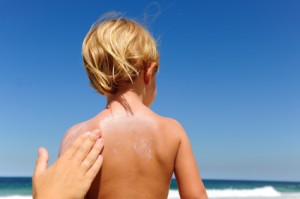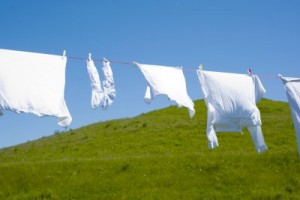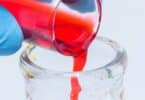
Elizabeth Ward, PhD, vice president of surveillance and health policy research at American Cancer Society (ACS), says that these chemicals we are exposed to every day can have a profound effect on or health and well being, especially when cancer links appear. Unfortunately, the actual numbers have been difficult to count.
“We’ve always recognized that there are potential carcinogens in the human environment,” she says, but “cases of cancer caused by chemicals have always been harder to measure.”
Hoping to measure the danger of many common, environmental chemicals better, the International Agency for Research on Cancer along with the US government created a list of 20 common chemicals that are not yet linked to cancer but could be soon. Ward and the groups researched chemicals that had shown evidence of casing cancer in animals and were potentially linked to cancer in humans.
“What we were looking for were the chemicals for which there was a lack of definitive data that they caused cancer in humans as well as evidence of widespread human exposure,” she says.
Some of the chemicals are industrial staples that many people are exposed to at their workplaces. Carbon black, for instance, is used to make synthetic rubber and is fond in welding fumes. For some industrial workers, this could mean being exposed to potential cancer causing agents daily.
For families though, the chemicals listed were found in many places where children could be regularly exposed. Atrazine is a pesticide used on corn that has already been banned in Switzerland. Diethylheyxl phthalate (DEHP) is used to make soft vinyl plastics such as shower curtains. Even Styrene, which is used to make Styrofoam cups and take-out boxes, has made the list.

Parents who want to limit their, and their children’s, cancer risks may feel as if they are overwhelmed by the amount of potential danger lurking all around them. Fortunately, there are 11 things that parents can do right now that will help protect their families.
- Avoid vinyl. This can be hard to do, mostly because vinyl is everywhere. Shower curtains, floor tiles, and even some packaging contain vinyl plastics that can leach. If the plastic seems soft and pliable and has the distinctive plastic smell, skip it.
- Buy organic food. Food that is grown organic has no dangerous chemical pesticides, herbicides, and fertilizers soaking into it. The fewer chemicals you feed your family the better.
- Stay away from Styrofoam. Bring your own mug to fill with coffee, and bring along a reusable food container for leftovers at restaurants. And if you can, avoid places that deliver take-out in foam containers. The less it touches your family’s food the better.
- Wash your hands regularly. Some chemicals, such as with vinyl and lead, can leach out into dust and get on your hands. Washing your hands can prevent some of these chemicals from further contaminating you and your family.
- But skip the antibacterial soaps. Some studies have found that a chemical used in antibacterial soaps, triclosan, can mix with chlorine in tap water and create a by product of chloroform. All you really need to stay clean is warm water and plain soap.
- Install a water filter. Buying plastic bottles of tap water can both let chemicals from the bottles leach out, and adds more waste to the landfills. A good water filter, however, can get out many of the harmful chemicals found in tap water with little waste.
- No more dry cleaning. Perchloroethylene, a chemical used in dry cleaning, is already linked to headaches and asthma attacks. Instead, hand wash your delicates with gentle detergent at home.
- Avoid sunscreens that disappear on your skin. As tacky as they may look, sunscreens that stay white and visible on your children’s skin have fewer of the more dangerous chemicals in them. If it can soak in and disappear, it is letting titanium dioxide or zinc oxide into your children’s bloodstream. Causing brain and liver damage, and possible cancer.
- Test your home for lead. Lead paint can harm children in so many ways. Though the paint was banned in 1978, many older homes still have lead paint areas. Parents should also have their soil tested for possible high lead levels in the dirt.
- Be careful about your wood products. Many of the glues used on wooden home items, such as cabinets and furniture, contain formaldehyde. Search out companies and craftsmen that use formaldehyde-free glues and finishes on their wooden items before you buy.
- When all else fails, relax. For many parents, there is no way to avoid every possible cancer causing environmental chemical. Some of these chemicals are so present in our surroundings that avoidance means isolation from society. Parents should do the best they can, but not fret if their children are still facing chemical exposure.
– Summer, staff writer
Related Articles:
- President’s Cancer Panel Finds Babies Are Born Polluted
- New York Lawmakers Look To Ban Smoking In Cars With Kids
- Many Cancer Survivors Are Parents of Young Children
- Is Your Sunscreen Doing More Harm Than Good?







Thanks for providing that information on sunscreens. While there is no denying how important it is to shield children from the sun’s rays it is just as important as to how you do it! Most sunscreens contain so many chemicals that are absorbed by your child’s porous skin. When purchasing a sunscreen product, look for organic and natural ingredients.
Research by national and international agencies has found that exposure to styrene does not increase the risk of human cancer, even in those exposed to styrene at levels thousands of times greater than low levels detected in the environment.
To date, no regulatory health organization has classified styrene as a carcinogen. Moreover, a study conducted by a “blue ribbon” panel of epidemiologists and published in the peer-reviewed Journal of Occupational and Environmental Medicine (November 2009) reports: “The evidence of human carcinogenicity of styrene is inconsistent and weak. On the basis of the available evidence, one cannot conclude that there is a causal relationship between styrene and any type of human cancer.”
Priscilla Briones for the Styrene Information and Research Center (SIRC), Arlington, Virginia. SIRC (www.styrene.org) is a trade association representing interests of the North American styrene industry with its mission being the collection, development, analysis and communication of pertinent information on styrene. SIRC has sponsored approximately $20 million dollars in research over nearly 25 years to better understand the potential, if any, effects styrene may have on human health and the environment.
To be blunt, I would hardly call that an unbiased claim considering the source. Perhaps a person not receiving a paycheck from the styrene industry would be better trusted on the potential risk of styrene. If we allow industries to police themselves, pretty soon Coca Cola will clam it cures cancer and Burger King helps you lose weight, and they’ll have a mountain of payroll experts to prove it.